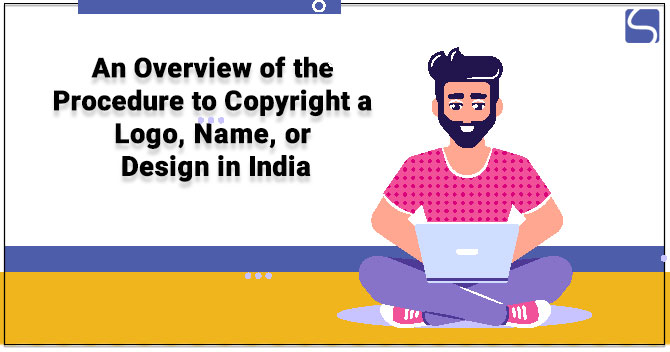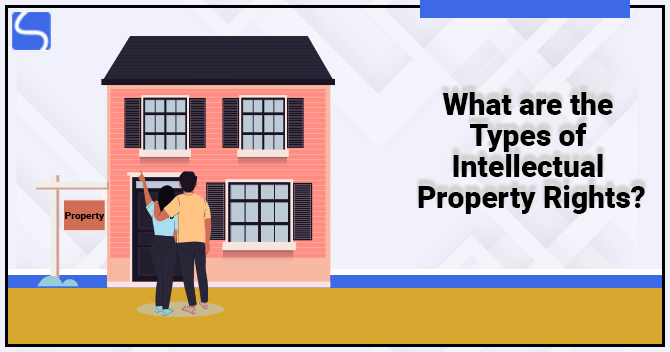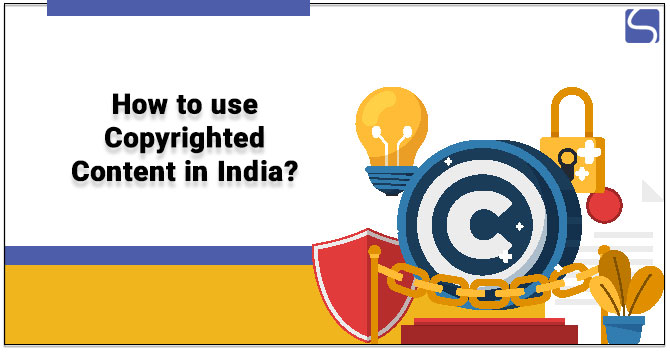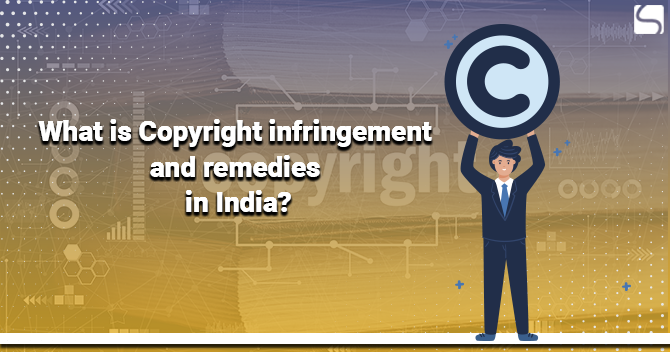An Overview of the Procedure to Copyright a Logo, Name, or Design in India

Karan Singh | Updated: May 27, 2021 | Category: Copyright
In this blog, we will describe a legal procedure to Copyright a logo, name, or design in India. A distinct and unique logo, design shows your brand value to your customer across the given marketplace. It can be your company’s name, logo, or word to create a unique presentation concerning your brand identity in the market internationally.
The particular design, logo, or name can help you to create a robust bonding with the end-user. Your logo shows your business reputation. Hence, you need to make sure comprehensive protection for your design, logo, or name so that you can derive long-term benefit.
Design or a logo that includes significant value can be counterfeited easily. Once copied or stolen, the unregistered logo or mark owner cannot sue the defaulter for such conduct due to the need of rights. Keeping the proposed assets under Copyright protection is one way to safeguard such happening. Copyright a logo, design, or name and any other artistic works ensure that your creation stays protected from Copyright Infringement for years to come.
Table of Contents
Copyright Protection – An Overview
Copyrights mention a set of rights placed in the owner of a Copyright on account of Section 14 of the Act. Such rights are only accessible to the Copyright’s actual owner. Also, such exclusive rights consist of the right of adaptation, reproduction, make translation, publication, communication, etc.
Being a vital part of IPR (Intellectual Property Rights), it delivers exclusive rights concerning distribution, publication, and usage to the author. It means a Copyright makes sure that the complete protection for the author’s work against duplication or replication. The duration of the Copyright Registration might vary from country to country; however, it normally lasts for the author’s lifetime.
Following are some different types of work that can be registered under the Copyright Protection:
- Music.
- Manuscripts.
- Films.
- Performance.
- Paintings.
- Book.
- Training manuals.
- Fashion design.
- Literary work.
- Software etc.
In India, Copyright Registration is governed by the Copyright Act, 1957. The register of the Copyright Registrar is divided into six vital categories. Literary works are other than computer programs.
- Musical works.
- Cinematography films.
- Artistic work.
- Computer programs, tables & compilations.
- Sound recording
Online Registration to Copyright a Logo, Design, or Name
Following is the online registration process to Copyright a logo, design, or name:
- First, you have to go to the official website, i.e., https://copyright.gov.in/Default.aspx.
- Then you have to create a User ID, and then you can log in securely.
- After login, you have to click on the button called “Click for Online Copyright Registration”.
- Then you have to fill the Form XIV and then click on the “Save Button”.
- Click on step-2 to open the “Statement of Particulars Form”.
- Fill the form with essential details and upload the soft copy of your signature (Size-512 KB).
- After that, you have to click on step 3 to open the “Statement of Further Particulars” form.
- Fill the said form with details, and such forms cover dramatic, literary, software works, musical, and then click on the Save button.
- Click on Step 4 to make a digital payment.
- By submitting the form, the online portal will create a Diary Number for future reference.
- Upload the authorship work in jpg/pdf/png format.
- After that, you take a printout of the “Acknowledgement Slip and Copyright Registration Form” and send it by post.
Basic Guidelines to Copyright a Logo or work under the Copyright Act, 1957
Chapter VI of the Copyright Rules, 1956, tells about the procedure to Copyright a logo, name, or work. The candidate can visit the Manager of Publications to procure copies of the Rules and Act. The process of registration for protecting Copyright protection is as follows:
- The application for Copyright Registration is to be made on Form IV according to the first schedule of the rules. The application will also consist of the Statement of Particulars.
- The applicant is needed to file an application for the registration of each work.
- Each application should be accompanied by a prescribed fee as per the second schedule to the Rules.
- The application should be signed by the individual looking for the registration or advocate in whose favour Power of Attorney has been implemented. An Attorney signed by the proposed party and accepted by the lawyer or advocate must also be enclosed.
- Every column concerning the Statement of Particulars and Statement of Further Particulars must be filed separately.
- The Copyright Act permits any person to register published and unpublished works. Copyright of log or work published before the enactment of the Copyright Act, 1957 is also entitled to Copyright protection.
- If the work looking for Copyright safeguarding is unpublished, a manuscript copy has to be sent in insertion to the application for affixing the stamp of the Copyright Office.
- In the case of two manuscript copies sent to the authority, one copy will be return to the candidate after being stamped by the authority; the other will be maintained in the Copyright Office for the record. It would also be reachable to the applicant to send only extracts from the unpublished work rather than a full manuscript and demand the same return after being stamped.
- The applicants are entitled to make alterations in particulars available in the Copyright Register in Form V for a registered work that has been published after some delay.
After creating a specific work, Copyright comes into the action, and as such, no formality is needed to be addressed for procuring Copyright protection. However, facilities present for having work safeguarded in the Copyright Register managed in the Copyright Office of the Department of Education.
The entries are available in the Copyrights Register act as prima-facie evidence from the legal outlook. The Copyright Office facilitates registration services to all forms of works and is regulated by the Copyright Registrar.
Conclusion
A Copyright gives exclusive rights to make sure the end-to-end safety of the actual work of authorship, such as movie, song, literary, or software. It’s always advisable to Copyright a logo, word, name, or design that follows the significant value for an individual or a company. After getting Copyright Registration, authorship’s work gets rights in terms of usage, publication, and distribution. Also, the likelihood of copying after the Copyright protection becomes next to insignificant. Hopefully, you understand the procedure to Copyright a logo or any work in India with the help of the above information.
Read our article:What are the Exceptions to the copyright protection?














